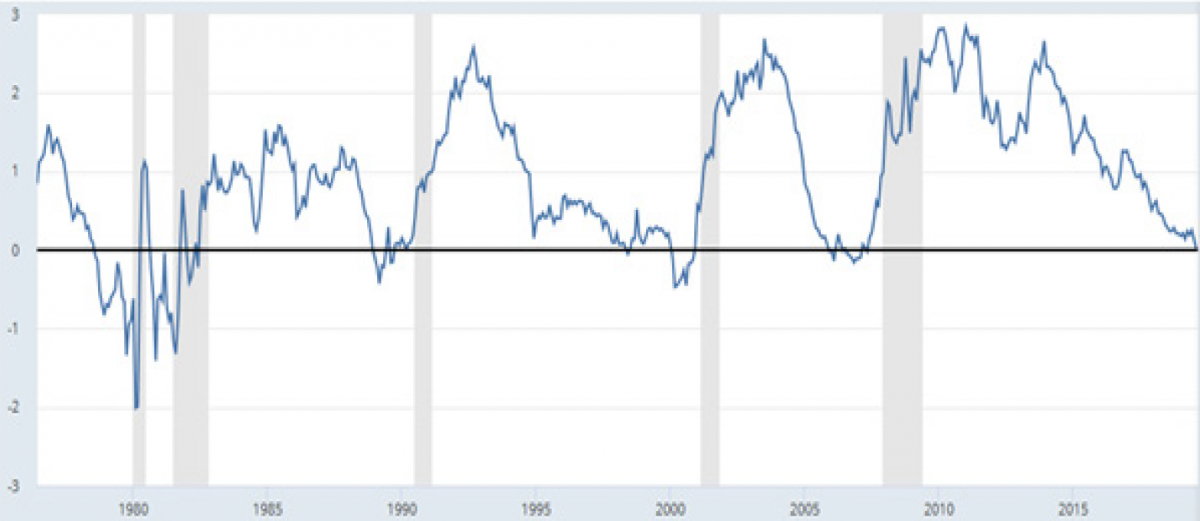26/08/2019
Flash boursier
Key data
| USD/CHF | EUR/CHF | SMI | EURO STOXX 50 | DAX 30 | CAC 40 | FTSE 100 | S&P 500 | NASDAQ | NIKKEI | MSCI Emerging MArkets | |
|---|---|---|---|---|---|---|---|---|---|---|---|
| Latest | 0.97 | 1.09 | 9'744.98 | 3'334.25 | 11'611.51 | 5'326.87 | 7'094.98 | 2'847.11 | 7'751.77 | 20'710.91 | 973.66 |
| Trend | |||||||||||
| %YTD | -0.74% | -3.63% | 15.61% | 11.09% | 9.97% | 12.60% | 5.45% | 13.57% | 16.83% | 3.48% | 0.82% |
Highlights:
1. China hits back
2. Unfavourable context for government bond yields
When the tweets start to squawk
The trade tiff between the US and China took a nasty turn last week, overshadowing the meeting of central bankers at Jackson Hole. The Chinese have hit back by imposing customs duties on USD 75bn of goods imported from the US and allowing the yuan exchange to ebb steadily lower against the dollar. Donald Trump has at last admitted that the trade tussle might lead to a recession, although he could not allow more than a two-month dip as any mention of ‘recession’ on his CV would hinder his re-election chances in 2020. He is reportedly looking into solutions such as a further cut in income taxes to offset the effects of the duties.
In another unrestrained blast of tweets last Friday, he once again caught investors off guard, triggering a sharp correction in equity markets. During this diatribe he first questioned whether Jerome Powel or Xi Jinping is America’s worst enemy. He then announced that import duties would rise from 25% to 30% on the close to USD 550bn of Chinese goods that are imported.
Jerome Powell stated during the Jackson Hole symposium that the signs for the US economy were still healthy. The job market is solid and rising wages are underpinning consumer spending. But he then listed a string of factors hanging over the global economy, one of which was the trade war. The end result is the Fed will continue taking appropriate measures to sustain the current growth trend. At the same time, several Fed governors expressed doubt about the timeliness of initiating a rate-cutting cycle. In this context, sheer gravity seems to be driving government bond yields ever lower, pulled down by slowing global growth, low inflation and the tendency towards looser monetary policies by the main central banks. The market has roughly priced in rate cuts by the Fed totalling 100 basis points between now and the end of 2020.
Currently it is possible to see some correlation between the current trajectory of interest rates and industrial production. Manufacturing indicators have been extremely disappointing recently. In the US, the PMI for manufacturing is situated in contraction territory for the first time since 2009, at 49.9. In Germany it’s even worse: their manufacturing PMI is at 43.6, with foreign orders dropping across all sectors and new business inflows on the decline.
More recently China has adopted a calmer attitude and seem intent on restarting talks, which has reassured investors somewhat. Market volatility is likely to endure in the meantime, so we advise hedging against an even sharper fall in the price of equities.
Harbinger of a recession in the US?
Yield spread (%) between 2- and 10-year US treasury bonds

One focal point on the yield curve is the difference (or the spread) between two- and ten-year maturities. It is usually seen as a reliable leading indicator on the US business cycle. Now the current reading is causing concern among investors because of a so-called ‘inversion’: the yield on ten-year paper is lower than that of two-year paper, suggesting that an economic recession is brewing and will hit home some time in 2020.
As the chart shows, that has happened in the past. The time between the signal and the event is slightly upwards of one year on average. But we can rightly ask whether the forecasting power of this indicator tracking US bond yields has decreased in the meantime. Technical factors such as the higher issuance of short-dated treasury notes and the buying of long-dated maturities by institutional investors such as pension funds partly accounts for a flattening in the yield curve. There also exists a ‘risk premium’, or the surplus yield historically required by investors for buying long-dated maturities, in a context of low inflation and a worldwide savings glut.
Globalisation in the bond market, just as rates set by major central banks such as the ECB and the Bank of Japan sit in negative territory, likewise increases the attractiveness of US bonds. Hence the US bond market does not depend only on the national economic cycle. Furthermore, a self-fulfilling prophecy might also play out insofar as the spread between long and short rates narrows in response to expectations of a stronger dose of easing from the Fed. One interpretation is that market participants expect a recession, price it into the yield curve and then read it again as news. In contrast to these fears, the solid state of US job creation would suggest that a sharp contraction in the US economy is not imminent.
Download the Flash boursier (pdf)


 Flash boursier
Flash boursier